How Much is a Conservatory Extension Cost?
Last updated 13th February, 2025
Want to know more about conservatories? Trying to find out how much it costs to build a conservatory?
In this article we breakdown conservatory prices (average cost of a conservatory ranges between £2,500 to £5,000) for all the different types including Edwardian, Lean-to, Victorian, L-shaped, P-shaped and more so that you can calculate the conservatory cost of a new build.
Let's get started below!
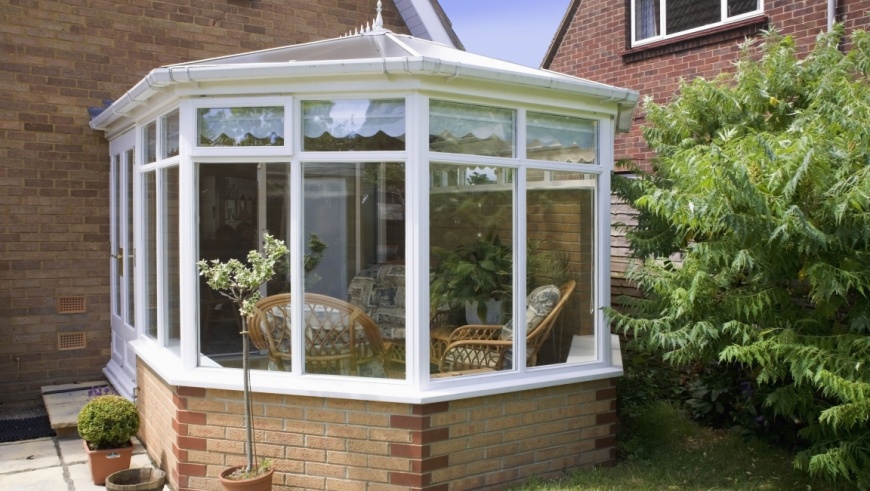
How Much Does a Conservatory Cost?
A conservatory’s average material cost is determined by elements such as size, kind, finish, number of doors, glass type, and more. Material expenses for smaller conservatories, such as lean-tos, will typically range from £2,500 to £5,000.
What about bigger or differently shaped conservatories?
The cost of a larger Victorian or P-shaped conservatory might range from £8,000 to £10,000.
When it comes to budgeting for a conservatory, planning charges are usually avoided because planning clearance is rarely required. Unless you live in a conservation area, your home is listed, or the conservatory is exceptionally large or close to your home’s limits, you will be able to proceed without having to pay for a planning application. However, you must still comply with building regulations, especially if making structural openings or replacing roofs.
Before proceeding, speak with the planning department of your local government if you have any concerns.
Unless you want to build the conservatory yourself, most quotes you receive will be for supplies and installation. However, certain aspects of the installation might have a significant impact on the final job cost. For example, depending on the condition of the site (for example, will the builders have to remove a patio?), preparing the ground will necessitate labour.
Is there anything else you need to consider?
Another important consideration is whether your conservatory will have a dwarf wall. A dwarf wall is a small wall, normally less than a metre high, that acts as a sturdy basis for the glazing panels to rest on. It is typically built of brick, though it can also be stone.
A dwarf wall may be required to offer structural support if you plan to have a tiled roof. The construction of the wall will take longer and cost more money. Additionally, a conservatory is usually cheaper than a full extension due to lower associated costs, such as architect fees and skip hire.
The type of conservatory you decide to build will also affect the cost of your build.
Lean-to Conservatory
This is the simplest and cheapest type of conservatory is a lean-to, which consists of three walls built against an existing wall of your home and a roof that slants down over the conservatory.
Roof options include part glazed, fully glazed, or tiled roofs, as well as full glass sides or dwarf walls. A polycarbonate roof is also a popular and affordable option for lean-to conservatories. A simple new conservatory can be built for roughly £2,500 to £5,000, but prices can rise to more than twice that if you choose more expensive options.
Victorian Conservatory
Having a pitched roof and a rounded exterior is quite popular, and Victorian conservatory costs can range from £10,000 to £15,000 depending on the materials and finishes used. For example, a larger 4m x 4m aluminium conservatory with a glass roof can start at around £23,600.
Edwardian Conservatory
Edwardian conservatories are comparable to Victorian forms but have a flat frontage and a squared-off interior that allows for more functionality. The prices are comparable to Victorian conservatory pricing.
Orangeries Conservatory
Orangeries are a hybrid of an extension and a conservatory, with brick or stonework reaching the ceiling height and bringing the entire design closer to the rest of the house. However, because of the higher level of building required, pricing will be higher, ranging from roughly 10,000 to £20,000, or even more for large, sophisticated designs.
Gable-Fronted Conservatory
A gable-fronted conservatory is a stunning addition to any home, characterised by its traditional, triangular-shaped roof with a vertical front. This design not only adds a touch of classic elegance but also maximises the amount of natural light that floods into the space, creating a bright and airy atmosphere.
When it comes to conservatory costs, a gable-fronted conservatory can vary significantly based on size, materials, and additional features. On average, you can expect to invest between £11,500 and £26,000. This price range typically includes the cost of the conservatory itself, installation, and any extra features you might choose, such as underfloor heating or a solid roof.
One of the standout benefits of a gable-fronted conservatory is its ability to let in plenty of natural light. The vertical front allows for larger windows, making the space feel more open and inviting. Additionally, the traditional design of a gable-fronted conservatory can add a touch of sophistication to any home, making it a popular choice for those looking to enhance their living space with a timeless aesthetic.
Table of Contents
- How much does a conservatory cost?
- Supply only costs
- Additional costs
- Labour costs and time frames
- How to build a conservatory
- Cost affecting factors of building a conservatory
- DIY conservatory build
- Types of conservatories
- Lean-to conservatory cost
- Victorian conservatory cost
- Edwardian conservatory cost
- Orangery conservatory cost
- Removing a conservatory cost
- FAQs
- How to find & hire a contractor to build a conservatory
- Sources
Conservatory Prices
The table below will break down the costs of building a conservatory:
| Type of Conservatory | Overall Cost | Materials | Labour |
|---|---|---|---|
| Lean-to conservatory | £4,000-£8,000 | £2,000-£4,000 | £2,000-£4,000 |
| Victorian conservatory | £8,000-£10,000 | £3,000-£4,000 | £5,000-£6,000 |
| Edwardian conservatory | £8,000-£10,000 | £4,500-£5,000 | £4,000-£5,000 |
| Orangery conservatory | £10,000-£20,000 | £5,000-£10,000 | £5,000-£10,000 |
Cost Breakdown Calculator for Building a Conservatory
Individual Costs to Build a 3.5m x 3.5m Lean-to Conservatory - Total Cost: £6000
Materials
£3300
Tradesmen
£2,400
Waste Removal
£300
Supply Only Costs
Do you want to build a new conservatory on your own? Or perhaps you simply wish to purchase your supplies? Many factors can influence the final cost of a fully furnished conservatory – even something as seemingly insignificant as the time of year you choose to buy and build might affect the price.
The cost of the conservatory’s supplies frequently affects the entire cost, so we’ll look over the supply costs for a few different conservatories. DIY conservatories can offer significant cost-saving benefits compared to hiring professionals for installation, though it's important to consider the potential risks involved.
Lean-To Conservatory
The cost of supplies for a three-sided rectangular design with a single flat sloping roof is around £2,595 - £3,100. Polycarbonate sheeting is commonly used for the roofing of inexpensive lean-to conservatories.
Roof options include part glazed, fully glazed, or tiled roofs, as well as full glass sides or dwarf walls. A polycarbonate roof is another affordable option, often chosen for its cost-effectiveness compared to glass roofs.
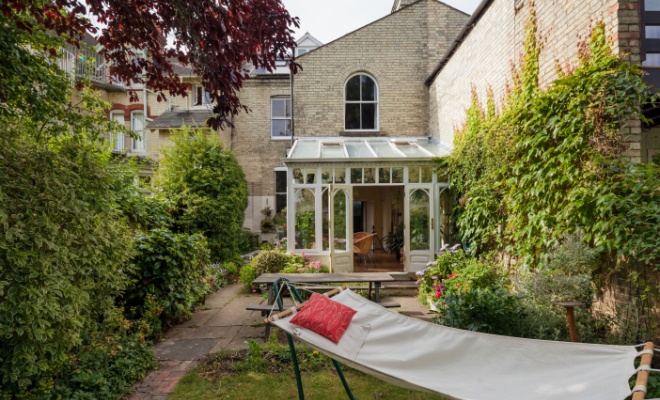
Victorian Conservatory
An ornate structure with vaulted pitched roofing and at least one faceted side. Although the room's sides are straight, the "end" is curved. Because of the curving and faceted bay, small Victorian conservatories can be difficult to furnish. For materials, expect to pay between £3,000 and £4,000.
Edwardian Conservatory
This is a more difficult work that is commonly seen in medium or bigger rooms, and if they are of the larger variety, they may require planning clearance. For a 4000 x 5000mm full glass conservatory, supply only costs between £4,500 and £5,000, with a steel base costing around £2,000.
Orangery Conservatory
To construct an orangery, you'll need a wide variety of materials. The cost of supplies is frequently factored into the overall job cost and is determined by the type and grade of materials utilised. Expect to pay between £5,000-£10,000.
Conservatory Paint Cost
You will need conservatory paint which will cost you £16 - £23 depending on the colour and the type of paint you want for your conservatory.
Tools Cost
A paintbrush will cost £5 - £50 depending on the type and if you want a pack or a single brush and sandpaper will cost you £6 - £13.
| Supply Type | Overall Cost |
|---|---|
| Lean-to conservatory | £2,595-£3,100 |
| Victorian conservatory | £3,000-£4,000 |
| Edwardian conservatory | £4,500-£5,000 |
| Orangery conservatory | £5,000-£10,000 |
| Paint | £16-£23 |
| Paintbrush | £5-£50 |
| Sandpaper | £6-£13 |
Additional Costs
There are multiple other costs that you must consider when having a conservatory built onto your home. Here we will guide you through each of them, so you know what to expect!
Plastering
When having your conservatory built, the inside may need plastering, so you should know the average cost to hire one into your home! Plastering costs are quite conventional, but like with many little jobs, there is a minimum amount that you should anticipate paying. It’s usually advisable to hire a plasterer only after you've completed a somewhat significant task.
Most plasterers charge between £150 and £200 per day, and a single wall shouldn't take more than four hours to complete. They will, however, charge a minimum of £100 for the labour alone.
Plastering a ceiling is more challenging than plastering a wall. As a result, it takes longer and costs a little more. As a result, expect to pay around 25% more to plaster a ceiling than a wall, or £250.
Painting and Decorating
Once the conservatory is built then you might decide you want to hire a painter or decorator to help the process of completing your conservatory. But how much does it cost?
A room of typical size will cost between £250 and £300. This price includes all prep work as well as two coats of high-quality paint. Although some preliminary work is included, such as washing the walls and filling in a few tiny cracks with wall filler.
If the walls are in bad shape and require a lot of time-consuming work to bring them up to code, the cost will be higher.
Most decorators charge between £150 and £200 per day in labour, and they frequently work in couples if the job is huge. The job should only take a few hours for a single room, but the artisan will frequently depart and return the next day to apply a second coat.
Installing Timber Cladding
The type of timber, the profile of the cladding, the size of the house, and your location within the UK will all influence the average cost of installing exterior timber cladding.
Oak, larch, and red cedar are the three most popular kinds of wood used for exterior cladding. Depending on the profile, oak cladding costs anywhere from £20 to £50 per square metre. Larch is less expensive, ranging from £10 to £40 per square metre on average, while red cedar ranges from £10 to £65 per square metre depending on the profile.
The cost is also affected by the size of the house and the area to be clad; evidently, various sized homes will cost differently. Some homeowners prefer to cover the full exterior of their home, while others prefer half-clad.
The amount of work required to clad a property in the timber will also rise, making it more expensive than a more simple designed property on one floor.
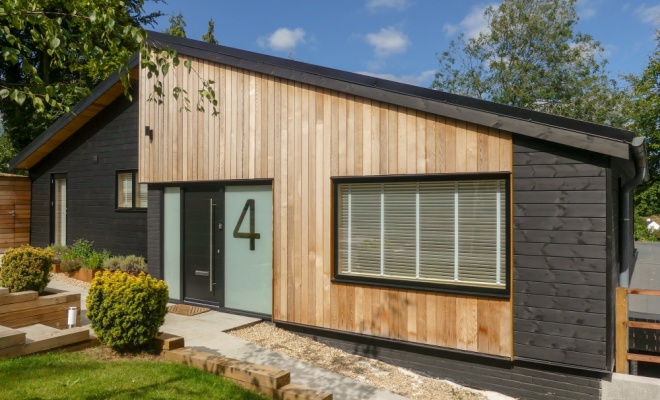
Gutter Replacement
You might need to have your gutters removed and reinstalled once the conservatory is fully built. Depending on the state of your fascias, if the roofline has easy access, and whether your house is detached, semi-detached, or terraced, the average cost of repairing and installing new guttering is usually between £450 and £700.
Most roofing workers work in couples and charge between £200 and £300 per day. It usually only takes one day to replace your guttering, or even less if only a ladder is required.
Hiring a Skip
Building a conservatory can be very messy and sometimes a skip is easy for somewhere to put your rubbish. The cost of skip hire is mostly determined by the size of the skip, which is in turn determined by the amount of trash you intend to put in it.
The smallest skips are mini skips, which are between 2 and 5 yards long and cost between £180 and £320 to hire, depending on the specific size and location within the UK. Due to its limited holding capacity, mini skip hire is usually only ideal for modest tasks, while they might be beneficial in regions with limited access.
Underfloor Heating
Conservatories are known for being cold, therefore underfloor heating would be a great way to solve this! The cost of installing underfloor heating varies based on the size of the area to be heated and the system's sophistication.
The floor must be removed before any underfloor system can be installed, but electric systems are significantly easier to install and are the preferred alternative for retrofits because they don't require substantial pipes.
Electric underfloor systems are typically priced at roughly £60 per M² for electric mats and £75 per M² for a loose-wire system.
The cost will also vary based on the sort of home you reside in; for example, installing a heated floor in a newly constructed home is far less difficult. As a result, labour and fitting costs will be lowered. It costs roughly £65 per M² to renovate a property.
New Windows
For an average semi-detached house with eight windows and two doors, the cost of installing double glazed windows for the entire building is normally around £4000 to £5000.
The typical cost is determined by the location, present window type, number of windows, glass quality, number of apertures, kind of window locks, and any scaffolding fees.
Remember that unless indicated, double glazing quotes do not generally include any particular or exceptional requirements. Coloured uPVC frames, "A" Energy Rated Windows that retains heat more efficiently, lead framed glass, triple locking security devices, and triple glazed windows all add to the cost of any installation.
Roofing
The cost of a new roof varies substantially depending on materials, location, roof surface size and type, average labour expenses, and other factors.
However, the average cost of a new roof in the United Kingdom is roughly £4,000. However, this figure is based on a detached house with a conventional "up and over" gable only roof style of average size and low-cost, long-lasting roofing tiles.
When comparing quotations from builders and roofing contractors, keep in mind that pricing isn't the only thing to think about; the quality of the materials and workmanship are equally crucial!
Location
On the one hand, you should expect hiring costs in the southeast to be higher than the national average (London especially). Nonetheless, in the north of England, Scotland, and Northern Ireland, costs are often lower than in the rest of the country.
Labour Costs and Time Frames
When evaluating the cost of a new conservatory, the price you pay for labour is a key factor to consider. This can help you determine if you want to do the job yourself or hire a professional. We'll go through the costs of having a conservatory installed in this article.
The average cost of labour for a conservatory specialist is between £150 and £200 a day. Builders usually operate in groups of two to three persons, with the whole labour cost reflected in the given job price. A small conservatory can take as little as 2-3 weeks to build, whereas a Victorian or P-shaped conservatory can take up to 3-6 weeks.
Please keep in mind that erecting a conservatory takes about 3 months because there is a lot of waiting time between the stages of construction, especially in the UK.
If you require a roofer to help you contract the conservatory roof, expect to pay between £15 and £25 per hour. You should expect to pay £10 to £20 per hour for a window fitter to install double glazing for you.
You could choose to hire a painter and decorator for the interior of your conservatory. They often charge between £100 and £300 a day. You may also need to hire an electrician to install any electrical systems or lights. Electricians often charge between £30 and £60 per hour.
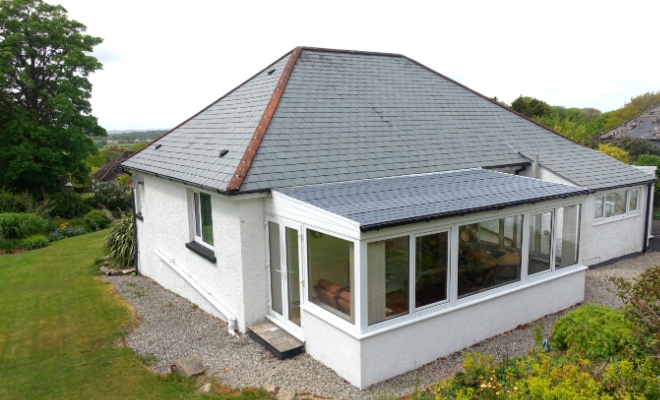
How To Build a Conservatory
If you are wanting to DIY your conservatory then it is important to know the steps to complete the build successfully and safely. With careful planning and budgeting, you can achieve your dream conservatory without compromising on quality. Here we will go through the steps you need to follow if you are building your conservatory.
Conservatory Base
First, make sure you have a solid foundation. The rest would be like piecing together a puzzle once you've established that. You must first ensure that you have a solid foundation on which to build your conservatory.
This entails excavating the area on the ground where your conservatory will be built. After that, it will be levelled, and the conservatory base will be created with concrete, which costs roughly £90 per square metre.
- First, calculate the size of your area. Make sure your base plan's size and specs are correct.
- The foundation for the conservatory should then be dug. Remove all wasted soil that is in your way and dig in the shape of your measured conservatory.
- After this, level the ground. As your working space, you'll need flat land in the design of your conservatory.
- Pour some concrete into the base. Concrete the foundation to the proper height, approximately four courses below the present wet course of the house.
- Clean up the space around you. You must keep the area around you free of waste and impediments.
- Start with the dry course and work your way up to the wet one. This is the level of your conservatory's floor. Check to see if it's even.
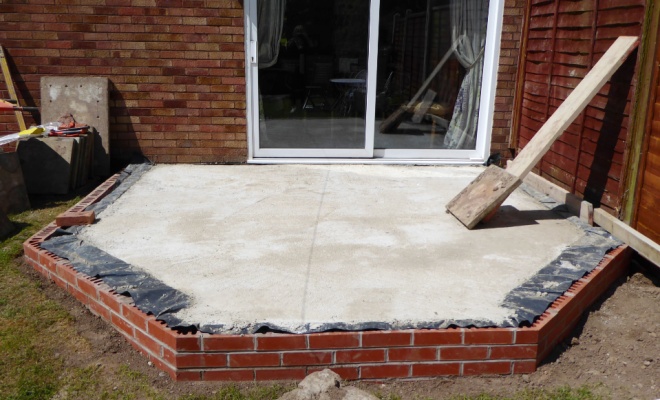
Conservatory Wall
You can create your conservatory in your backyard with the correct materials and skills. One step at a time, with a lot of hard work. This will entail constructing the wall from the ground up, ensuring that it is at least a metre tall. A conservatory dwarf wall will typically cost between £50 and £300 per M².
- After you have finished the base you should construct a dwarf wall. The dwarf wall starts at the bottom and rises to a maximum height of one metre. Wait for the cement to dry before placing the bricks.
- External sills should be installed. Placing the sills on top of the dwarf wall is a good idea. The pre-ordered sills should be customised to your home's measurements.
- All frames must be secured for safety. The initial frame must be fastened to the structure. Repeat with the rest, starting at the house and working outward until they meet on both sides.
- Install the doors. Door installation can be difficult, but with your pre-ordered equipment, the door should fit like a puzzle piece.
Conservatory Roof
You should then move on to building the conservatory roof. The roof can then be built once the foundations are in place. This includes putting in the roof ridge and rafters, as well as the glazing sheets.
- Place the ridge on the roof, your bespoke roof ridge must be installed directly on top of the frames. It should be the precise measurements that you require.
- Rafters should be added to the roof. Between the roof ridge and hip bars, place the roof rafters.
- Install the glazing sheets.
- Install gutters. The conservatory, like your home, requires gutters to keep the roof in good condition for a longer amount of time.
- Decorate the room. Whether or not you want decorations depends on whether you want a conventional or modern conservatory. The more recent ones have a more basic design. Choose whatever you believe is the best option for you. You can do it yourself or hire a professional painter or decorator to do it for you.
Cost Affecting Factors of Building a Conservatory
The cost of putting in a uPVC conservatory depends on several elements, the most important of which is the size and design required. As you may assume, the more space a conservatory has, the more money it costs!
The overall size of the conservatory will influence the cost because the larger it is, the more materials and labour time will be required. What type of roofing for your conservatory do you want, for example, polycarbonate or glass roof panels?
The colour of the finish (for example, white or wood effect) The expenses of the two types of finishes would be different. The cost will be affected by the type and quantity of doors you have since more materials will be required.
The type of glass chosen, such as tinted or plain, solar glass, and the width of the thermal gap in sealed units, as well as the foundations or brickwork necessary. Various design components, such as an elevated patio area or a veranda will affect the overall cost and don’t forget about the overall finish costs, such as plastering, decorating, and flooring! these will all have a massive effect on your overall cost.
However, lean-to conservatories are generally less expensive, starting at roughly £4,000 for the simplest and up to £10,000 and more for Victorian and P-Shaped designs. Conservatories, on the other hand, are virtually limitless, with many costings upwards of £40,000!
Frame Materials
The choice of frame material for your conservatory can significantly impact both its cost and appearance. There are several options available, each with its own set of advantages and considerations.
DIY Conservatory Build
It's simple to construct your conservatory. You don't need any prior experience to achieve this. You don't have to be a pro at DIY to achieve this. All you'll need are some simple, straightforward guidelines.
The fact that you can save thousands of pounds by building your conservatory is well worth it. You have the freedom to go at your own pace. Although a DIY conservatory can be built in a matter of days, some people prefer to take their time.
The biggest advantage of a self-built conservatory is obvious: you may save money by not having to hire an installation to oversee the project. Installing your space, however, is only one element of the process of adding a conservatory to your home. You'll need to make sure your new design complies with local building codes, doesn't harm the environment, and is structurally solid.
You might want to consider building your conservatory. If you have some DIY experience, you might be able to save money by handling the project yourself. However, due to all the other aspects of the process, building a conservatory on your own can be more difficult than you might expect. As a result, if you aren't already an expert, you should employ an installer.
Some jobs with building a conservatory will need to be officially checked such as electricity re-wiring, an electrician will need to come in and check that the wiring is safe, and everything is working properly. However, you will be able to decorate your conservatory with DIY as well as build it! Of course, with experience of DIY.
However, many of the problems you'll encounter when constructing a DIY conservatory arise before you even begin. You'll need to make sure the land you're going to use is suitable. If your garden has an uneven surface or any drainage pipes underneath it, it is not a good idea to construct there.
As a result, you must first inspect it – which typically necessitates doing a comprehensive technical assessment with an installer. While many firms include this in their quotes, it is not included in a DIY build. If you don't check, though, you risk creating a space that collapses or busts your home's sewage system.
In addition, you won't obtain the same quality from modular DIY kits as you would from a conservatory. Instead, you'll have to deal with generic components. Not only do they lack personality, making your home look like a carbon copy of someone else's, but they also don't perform well.
They frequently only satisfy the bare minimum in terms of glazing depth or security features. There's also no guarantee that your DIY kit will meet the requirements. If you want to extend your home with a quality build, you'll need a great installation as well.
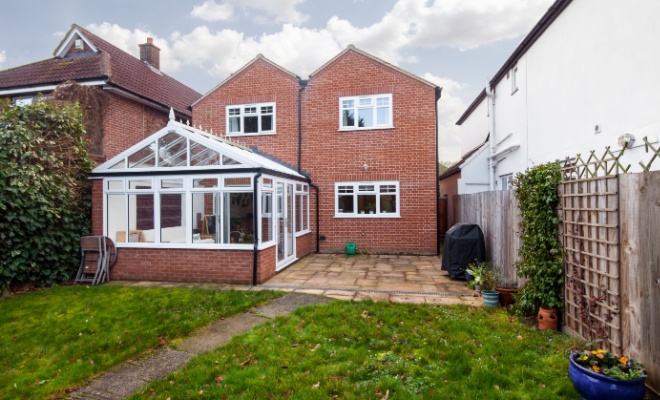
Types of Conservatories
Conservatories, in addition to being diverse in use, come in a variety of shapes, styles, and materials, allowing for a wide range of design options. While the design possibilities may appear limitless, they are almost all based on a few basic styles.
We’ll go over the various sorts of conservatories and their benefits and drawbacks. Traditional conservatories, known for their decorative glass elements, are a popular choice for expanding living space and enhancing the overall appeal of homes.
The Victorian Conservatory is like an enlarged bay window, with 5 windows in total, providing a beautiful view of the garden. A traditional conservatory often brings to mind the classic Victorian style, with its curved bay fronts and glass roofs that offer panoramic garden views.
Lean-to Conservatory Cost
The "Lean-to" or "Dwarf wall" conservatory is the most basic style of conservatory. The conservatory has a single-sloped roof and is connected to the home by a longer wall. It's also a good option for tucking into a corner. This is a simple three-sided design that is ideal for folks with tiny homes who want to add some more relaxing areas to their home.
Pros:
- ✔ Easy to build
- ✔ A good option is to tuck into a corner
- ✔ Better for smaller homes
Cons:
- ✖ Basic design.
Victorian Conservatory Cost
The Victorian Conservatory is like an enlarged bay window, with 5 windows in total, providing a beautiful view of the garden. A ridged roof and a multi-faceted end wall create an exquisite, rounded look in a Victorian-style conservatory. Despite its name, the Victorian conservatory is a timeless design that works with practically any era or style of home.
Pros:
- ✔ Works with any type of home
- ✔Elegant look
Cons:
- ✖ Expensive
Edwardian Conservatory Cost
Edwardian conservatories are like Victorian conservatories in appearance, with a flat front and a rectangular shape. Also, a popular conservatory option, with traditional flourishes, this form of conservatory is suited to period homes, but with modern materials and finishes, it would also complement a modern design home.
Pros:
- ✔ Modern
- ✔ Popular option
Cons:
- ✖ Expensive.
Orangery Conservatory Cost
An Orangery could be the appropriate answer if you want to create a magnificent design with greater privacy than a conservatory provides. Orangeries are a hybrid of a conservatory and an extension, consisting of a substantial building made up of strongly constructed walls, pillars, and glass.
A glass Lantern roof is commonly installed into a GRP Warm Roof on an orangery roof. This kind of building, like a single-story extension, results in a solid structure. Flat skylights, which enable light to flood into the area and provide stunning focal points, are another popular option for Orangery roofs.
Pros:
- ✔ Privacy
- ✔ Also, like an extension
Cons:
- ✖ Expensive option
Removing a Conservatory Cost
While removing an old conservatory is not difficult, removing the base and foundations can take some time. So, depending on the size of the conservatory, anticipate putting in a few days of work to entirely remove it. This would also necessitate a couple more skips, bringing the total cost to roughly £500.
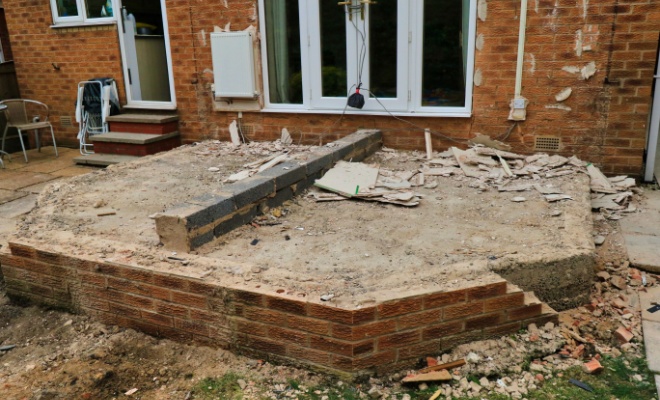
FAQs
- Replacement conservatory roofs are a popular and effective way to insulate conservatories, and with good reason. Because most heat escapes through a conservatory's roof, erecting a barrier helps to limit heat loss
- If you're on a budget, consider installing shades and roof drapings. The blinds will make the room cooler in the summer, but they will have little effect in the winter
- It may be possible to increase the glazing bars in your conservatory so that a thicker layer of polycarbonate may be installed, providing more insulation against the cold
How to Find & Hire a Contractor to Build a Conservatory
Adding a conservatory to your home can drastically improve how you enjoy your living space. However, like with any significant project, you must ensure that the conservatory installation you hire is qualified for the job.
- Check to see whether they've completed similar conservatory projects to yours and that you're comfortable working with them.
- Experience is just as important as qualification.
- Be mindful that subcontracting can make the procedure more difficult.
- Make sure they're used to working with the product in question.
- Obtain comparable quotations and set up a payment schedule.
- Examine their knowledge of planning authorization and building codes.
Sources
https://www.localconservatoryprices.co.uk/conservatories-cost/
https://www.supaliteroof.co.uk/in-the-know/best-way-to-insulate-a-conservatory/










